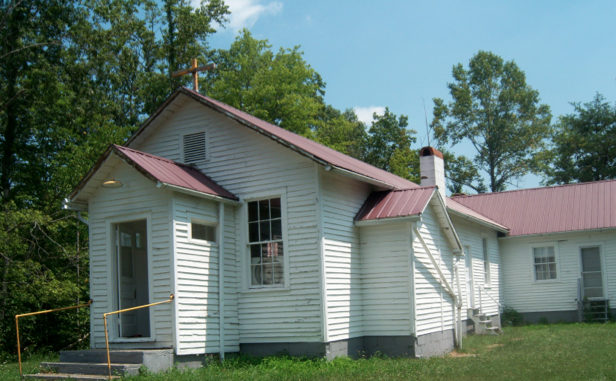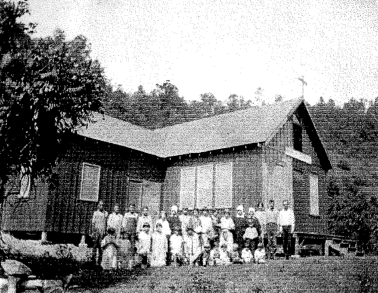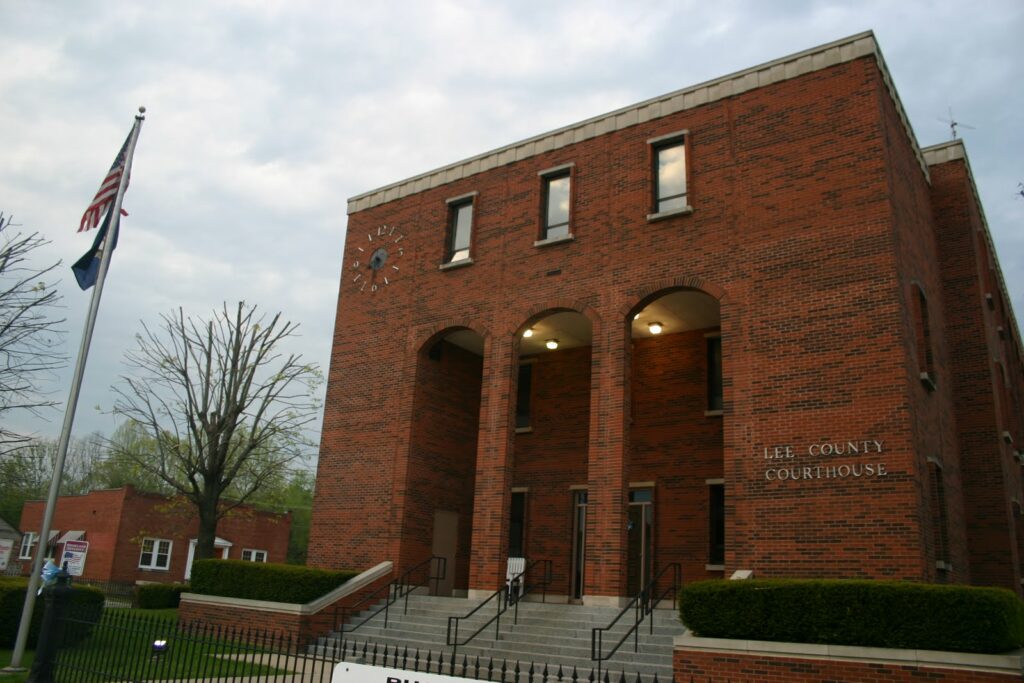| Lee County Courthouse and Historic Marker in Beattyville, Kentucky. Author’s collection. |
The last time I ventured to Beattyville was in the waning days of the last millennium. With friends, I watched the wooly worms race at the annual festival that draws thousands to the sleepy seat of Lee County. But last week, I returned to do a little business in the Lee County Courthouse.
County Named?
Lee County borders six counties: Powell, Wolfe, Breathitt, Owsley, Jackson, and Estill. It is Kentucky’s 10th smallest county by population (7,594) and the 24th smallest county by square mileage (210 sq. mi.).
Its history is complex. Formed just five years after the end of the Civil War, the area that comprises Lee County (like much of the Commonwealth) was divided during the war. According to the Kentucky Encyclopedia, “Union sympathizers formed a Home Guard, headquartered at Rocky Gap, eight miles north of Beattyville. On November 7, 1864, a Confederate force under the command of Lt. Jerry South fought the 20th Kentucky Militia at the Middle Fork of the Kentucky River in Lee County.”
By 1870, sentiments likely remained divided. The story told on the historic marker outside the courthouse – that the county was named after Confederate General Robert E. Lee – is quite possibly incorrect. That historic marker was erected in 1964, a time when Kentucky’s history was still being rewritten with an unnecessarily southern bent. The Kentucky Encyclopedia raises similar doubts to the necessity of telling Lee’s military accolades on Main Street Beattyville. That article cited “strong Union sentiment in the area” during the War the entry finds “a more likely explanation” in Lee County being named after the county of the same name in Virginia because many of the local inhabitants traced their roots to that locale. Lee County, Virginia, the westernmost county in Virginia, was named after “Light Horse” Henry Lee III (who, coincidentally, was the father of General Robert E. Lee).
The Old Courthouse
The present Lee County courthouse is the county’s second courthouse. The first was built in 1872, two years after the county was formed. That first courthouse was used until 1977, when it was demolished for the present structure.
 |
| Lee County Courthouse from 1872-1977. UK Libraries. |
 |
| Lee County Courthouse from 1872-1977. Library of Congress. |
The Current Courthouse
Four plaques on this wall, the brick used to construct interior walls on the 1st, 2nd, and 3rd floors of this building, and the iron bell mounted in the east outdoor sitting area, were removed from the courthouse which occupied this site from the year 1873 to the year 1977.
| Interior wall inside the Lee County Courthouse. Author’s collection. |
Lee County’s Historic Places
The historic markers are the one first photographed above (“County Named, 1870”), another (“A Masterful Retreat”) was one of many along the path of USA Gen. George W. Morgan’s retreat from the Cumberland Gap to the Ohio River in 1872, and “Kentucky River Forms Here” near where the already united North Fork and Middle Fork join with the South Fork to form the Kentucky River at Beattyville.
The three accessible sites on the National Register were the Graded School, the St. Thomas Episcopal Church, as well as St. Therese which is the oldest Catholic Church in Eastern Kentucky.





